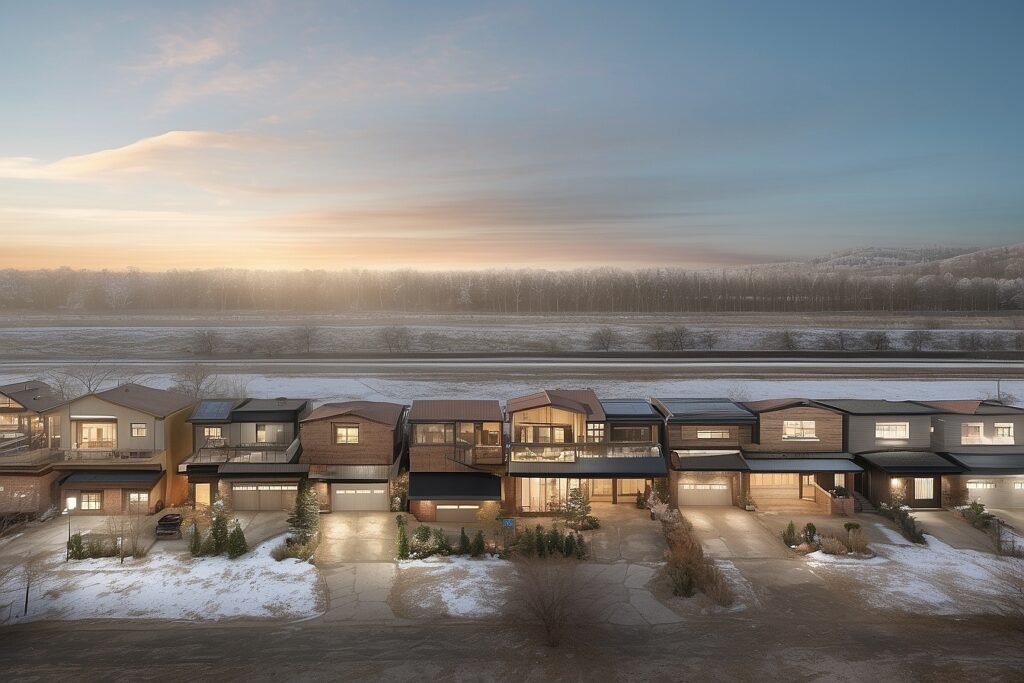U.S. Housing Market Sees Downturn in September 2023

Existing-home sales in the United States experienced a decline in September 2023, as reported by the National Association of Realtors (NAR). While sales increased in the Northeast, they decreased in the Midwest, South, and West regions. Notably, all four regions showed a year-over-year decrease in sales volume.
The total number of existing-home sales, encompassing single-family homes, townhomes, condominiums, and co-ops, fell by 2.0% from August to a seasonally adjusted annual rate of 3.96 million in September 2023. This represents a significant 15.4% decline compared to September 2022 when sales stood at 4.68 million.
NAR Chief Economist Lawrence Yun highlighted the persistent challenges facing the housing market: “Limited inventory and low housing affordability continue to hamper home sales. The Federal Reserve simply cannot keep raising interest rates in light of softening inflation and weakening job gains.”
In terms of inventory, the total housing stock at the end of September was 1.13 million units, marking a 2.7% increase from August but an 8.1% decrease from the previous year. Unsold inventory now represents a 3.4-month supply at the current sales pace, slightly up from 3.3 months in August and 3.2 months in September 2022.
The median price of existing homes across all housing types in September was $394,300, reflecting a 2.8% increase from September 2022 ($383,500). This upward trend in prices was observed across all four U.S. regions, underscoring the urgent need for increased housing supply, according to Yun.
The Realtors Confidence Index revealed that properties typically stayed on the market for 21 days in September, up from 20 days in August and 19 days in September 2022. Notably, 69% of homes sold during the month were on the market for less than a month.
First-time buyers represented 27% of sales in September, down from 29% in both August 2023 and September 2022. This decline mirrors findings from NAR’s 2022 Profile of Home Buyers and Sellers, which reported the lowest annual share of first-time buyers (26%) since data tracking began.
Cash sales accounted for 29% of transactions in September, up from 27% in August and 22% in September 2022. Additionally, individual investors or second-home buyers, often associated with cash transactions, purchased 18% of homes in September, compared to 16% in August and 15% the previous year.
Distressed sales, including foreclosures and short sales, made up only 1% of total sales in September, indicating minimal impact on the market.
Mortgage Rates Climb to New Heights
As of October 12, 2023, Freddie Mac reported that the 30-year fixed-rate mortgage reached an average of 7.57%. This marks an increase from 7.49% the previous week and a notable surge from 6.92% recorded one year ago. The steady rise in mortgage rates reflects ongoing shifts in the financial landscape, impacting both prospective homebuyers and existing homeowners.
Single-family Home Market Slows
In September, the pace of single-family home sales declined, reaching a seasonally adjusted annual rate of 3.53 million units. This reflects a 1.9% decrease from August’s rate of 3.6 million units and a significant 15.8% drop compared to the previous year. Despite the slowdown in sales volume, the median price for existing single-family homes saw a modest increase, reaching $399,200 in September, up by 2.5% from the same period in 2022.
Condo and Co-op Sales Follow Suit
Similarly, existing condominium and co-op sales experienced a downturn, recording a seasonally adjusted annual rate of 430,000 units in September. This represents a 2.3% decrease from the previous month and a notable 12.2% decline compared to one year ago. Despite the decrease in sales volume, the median price for existing condos rose to $353,800 in September, marking a 6.8% increase from the previous year’s median price of $331,300.
The trends observed in both the single-family and condominium markets underscore the complex dynamics at play in the real estate landscape, influenced by factors such as evolving market conditions, shifting buyer preferences, and the broader economic environment. As the market navigates these changes, stakeholders must remain vigilant and adaptable to effectively navigate the challenges and opportunities ahead.
Regional Real Estate Dynamics: Insights from Across the Nation
Northeast
In the Northeast region, existing-home sales saw a notable uptick of 4.2% in September, reaching an annual rate of 500,000 units. However, this figure reflects a significant 16.7% decline from September 2022. Despite the moderation in sales volume, the median price in the Northeast surged to $439,900, marking a robust 5.2% increase from the previous year. This price appreciation underscores the persistent demand in the region, even amid broader market challenges.
Midwest
Conversely, the Midwest witnessed a slight downturn in existing-home sales, with a decrease of 4.1% from the previous month, resulting in an annual rate of 930,000 units in September. Year-over-year comparisons reveal an 18.4% decline in sales activity. Nonetheless, the median price in the Midwest climbed to $293,300, indicating a 4.7% increase from September 2022. Despite the sales dip, the region continues to demonstrate resilience, supported by steady price growth.
South
In the South, existing-home sales experienced a marginal decline of 1.1% from August, resulting in an annual rate of 1.82 million units in September. Compared to the previous year, this represents an 11.7% decrease in sales volume. However, the median price in the South saw an uptick, reaching $360,500, reflecting a 3.1% increase from September 2022. Despite the challenges posed by fluctuating market conditions, the South maintains its position as a key player in the real estate landscape.
West
Meanwhile, the West region saw a notable decline in existing-home sales, with a decrease of 5.3% from the previous month, leading to an annual rate of 710,000 units in September. Year-over-year comparisons reveal a significant 19.3% drop in sales activity.
Despite the sales contraction, the median price in the West rose to $606,100, indicating a modest 1.8% increase from September 2022. This region’s market dynamics reflect a period of recalibration following years of rapid price escalation, particularly in the Rocky Mountain region.
As Lawrence Yun, NAR’s Chief Economist, notes, these regional variations underscore the diverse factors influencing housing markets across the nation. From shifting demand dynamics to evolving inventory levels, stakeholders must remain attuned to regional nuances to navigate the complexities of the real estate landscape effectively.




You actually make it appear so easy along with
your presentation however I find this matter to be actually one thing which I feel I’d never understand.
It kind of feels too complex and very large for me. I am having a look forward on your
next submit, I will attempt to get the hang of it!
Escape room lista